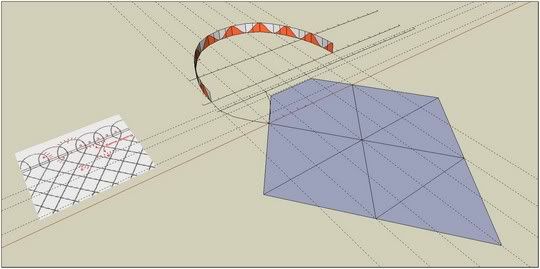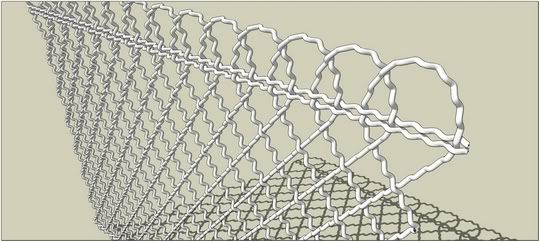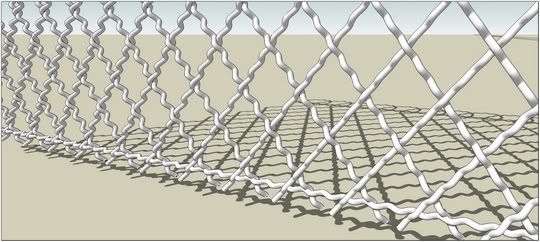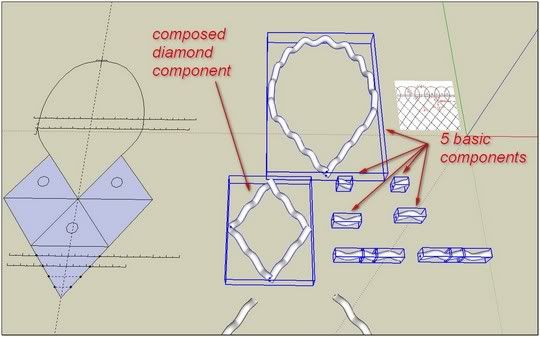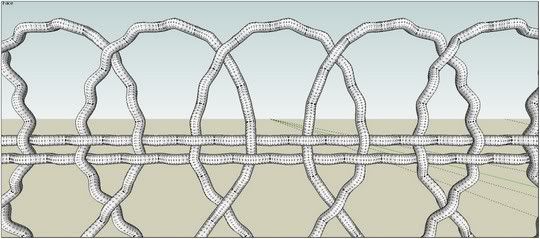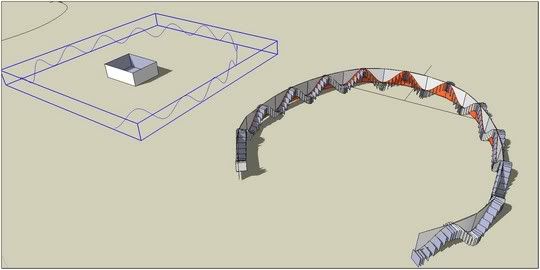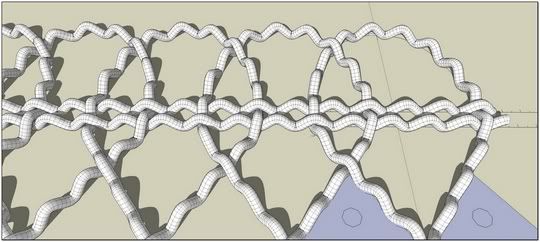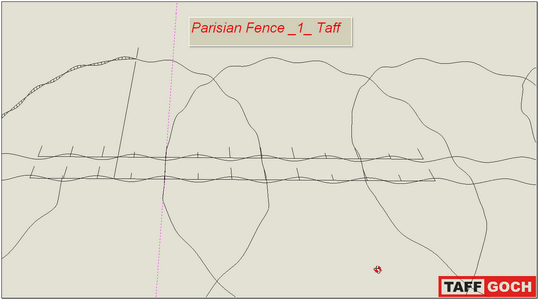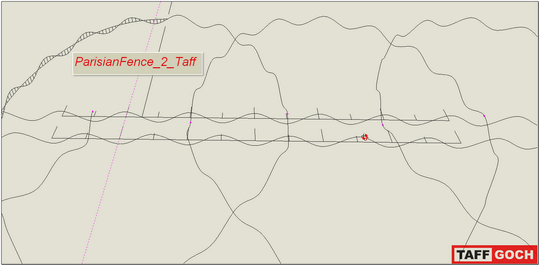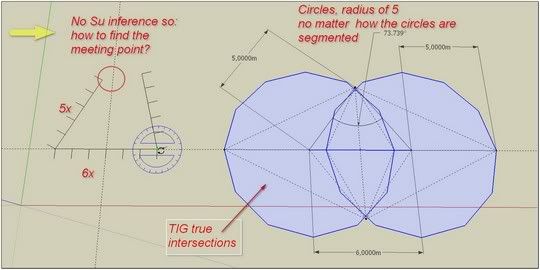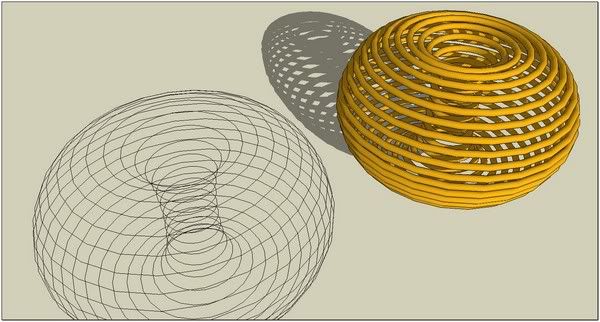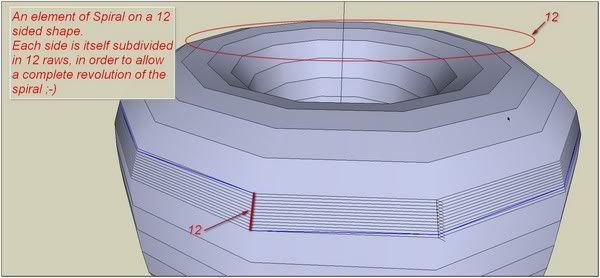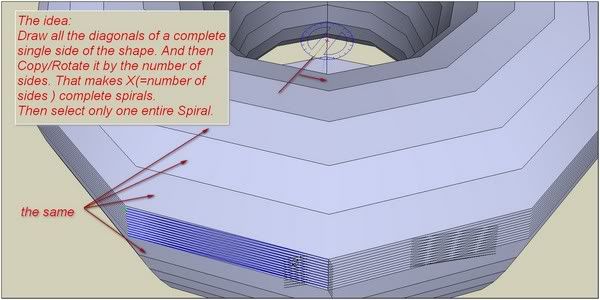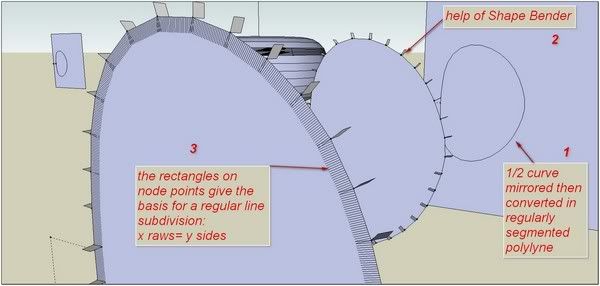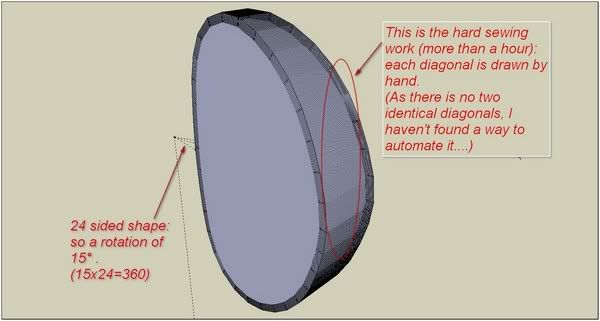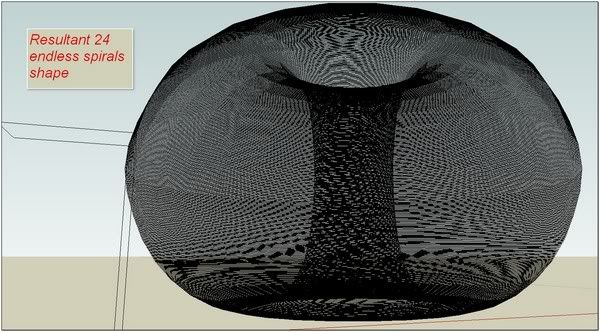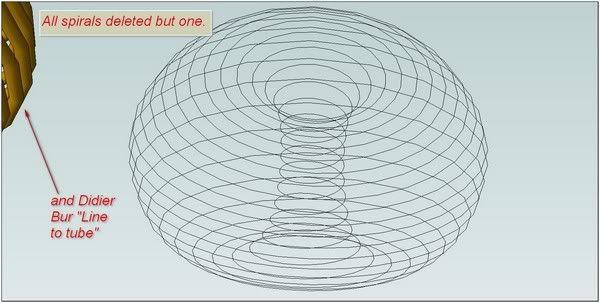An exercise: DRAWING A PARISIAN FENCE
-
@unknownuser said:
"It's maybe not a good idea to use the Shape Bender for a long parisian fence roll!
Better is make a texture from an image result!"
Pilou,
I agree. I look at this model as an exercise, or challenge, to improve modeling skills. Such a detailed fence would make a model very "heavy," because it introduces too many line and face entities.
For inclusion in a larger model, an image-texture, with transparent background, and some SU face trimming (for proper shadows) would be a much better option. If trimming is too complex, just turn off shadow-cast and shadow-receive checkboxes (in "Entity Info" dialog box.)

-Taff
-
Dear Taff, first thank you so much for this documented reply. I Know so well how to produce documented pictures is time consuming.
I was seriously beginning to see myself with a too bad limited mind. After various false tries, I was turning around like a dervish. I was thinking of decompose (as you) the curve, but adjusting several portions of mathematical circular curves (ellipsoid) for which I had not the theoretical power to make any calculation..
So a great thank to you to have showed me what I was missing: modesty!!. When we haven't the theory nor the tool, it remains the " bricolage", But this can be a clean "bricolage" as you have done.
Since Su doesn't give the curve length in addition to the radii in real time into the VCB, going near by near as you do with simple portions of circle is the elegant solution.One of my interessant tries was to use Fredoscale's bend tool applied on a line with the exact length, bend it a little with the correct number of slices, and take bend tool again on this new well segmented curve but with a slice of One and bend it step by step. May be it is possible but I haven't reach to go to the end without bugs..
interessant tools:
Didier Bur Dim-Angle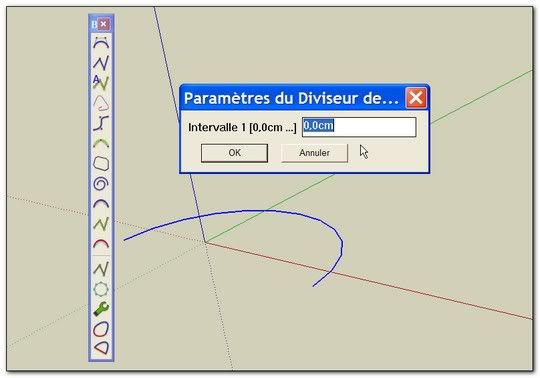
I'm going for work until far in the night, so no try before tomorrow.
++simon
-
-
Simon,
Sine wave count and braiding looks good. You are to be commended for persevering, until achieving success!
-Taff
-
-
@simon le bon said:
"Is that the waves have to be regularly curved in the curved area?"
Simon, good catch.
Once I had established the curve, of 5 and 7 straight-line segments, I could then use the "arc" tool, to create new curves, of 35 and 49 straight-line segments (by multiplying by 7.)
I did this, only to more "smoothly" model the curve. It's not absolutely necessary, but isn't difficult, since the sine-wave amplitudes are already established. Incorporating the amplitudes into the new, smoother curve is relatively easy, using SketchUp's inferences.
-Taff
-
Dear Taff,
I was to bring a pair of my tips for this exercise and was waiting for your validation and:::
@unknownuser said:
You are to be commended for persevering, until achieving success!
I thought I had finished my exercise??I open your skp to get an idea of what you mean!
Is that the waves have to be regularly curved in the curved area? I don't see what can you mean else
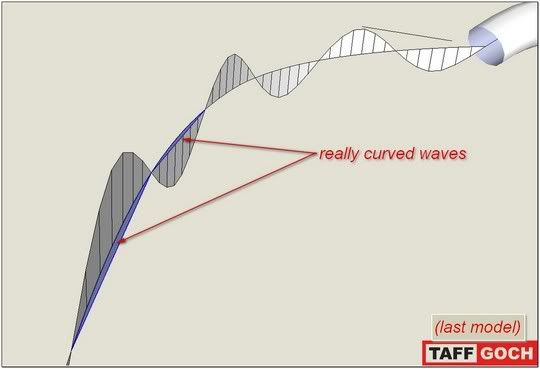
 simon
simon -
Dear Taff,
Re: Doing this way, we can't maintain the sine segments along the top of the fence exactly the same length!
Anyway, I would like to propose you some of the tricks I had previously talking about to achieve easily the round top of the fence as you wish .
YouTube SketchUp_ParisianFence_Tricks 1[flash=640,505:2smet3c3]http://www.youtube.com/v/EwExCv2ZTRw[/flash:2smet3c3]
using:
Component Stringer
BezierSpline
Projections
Lines to tubesNow I just have to do it for real

*s -
It was the trick N°1, what will be the n°2

The curious thing is there is no precise documentation on the Net about this sort of garden materail

-
-
@simon le bon said:
I havn't discovered what was the mistake Taff was talking about
Simon, look here:
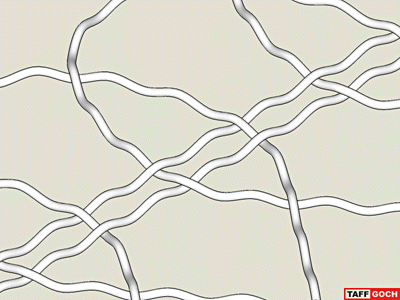
-Taff -
Simon,
I found that the key characteristic of the fence is the horizontal-to-vertical spacing. The diamond shape has to be exactly the correct proportions, or the sine waves of the top and bottom "rails" don't overlap properly. After a couple of false starts, I recognized my error, and got the diamonds the right shape.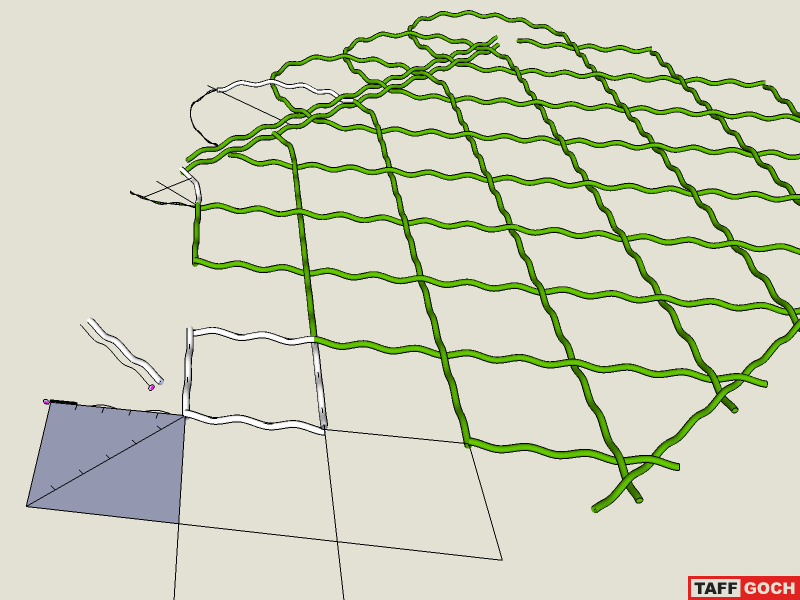
I hope that I've provided enough detail, in the model, to demonstrate how I constructed the sine wave paths.-Taff
This model contains a mistake. Download corrected model from 3D Warehouse.
-
-
oops!
With the animation I can see it very well now, thanks
-
Next challenge--->(not very hard, but let see..)endless spiral

Btw in the images are 3(for a better visual impact).
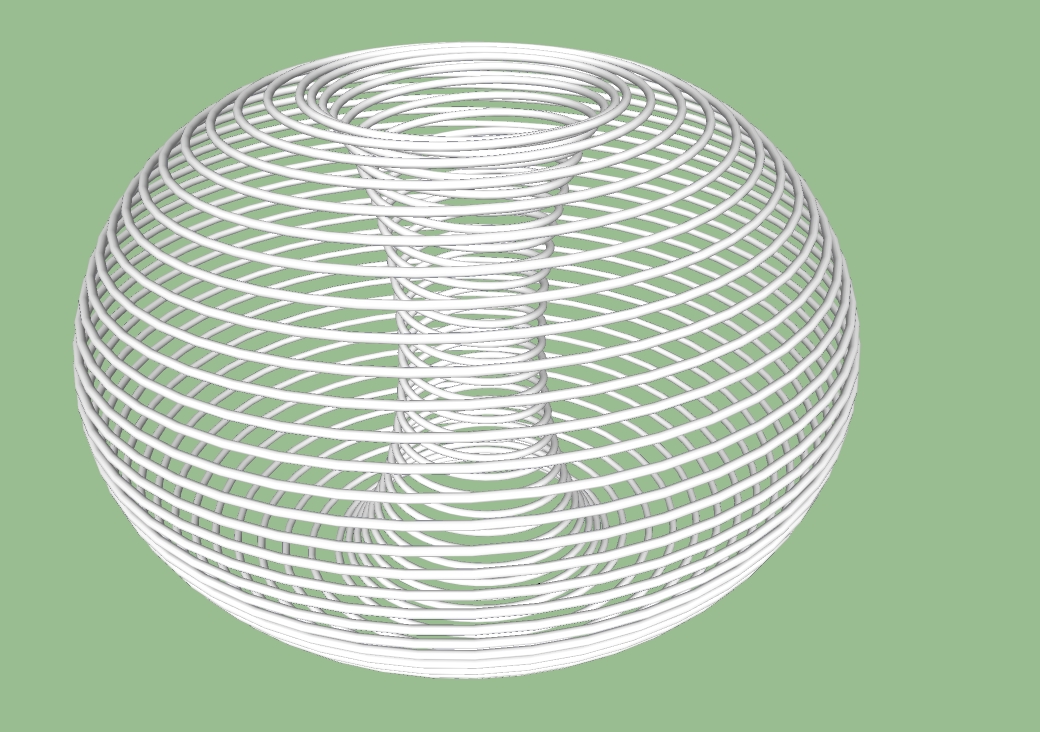

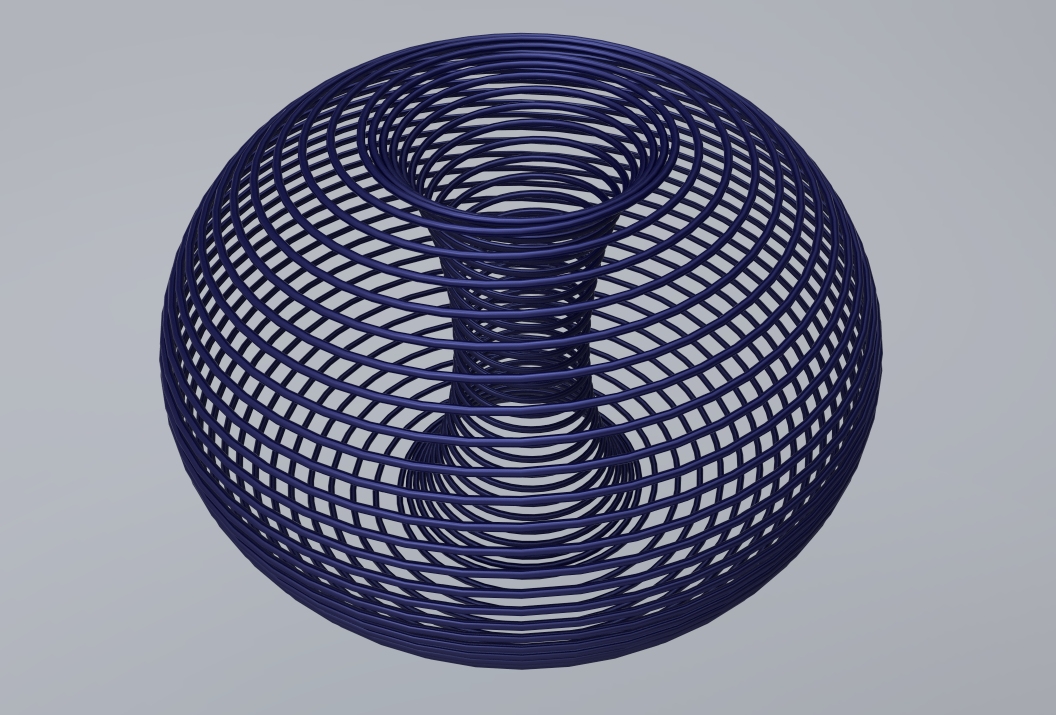
-
Excellent Eli.
No idea of how we can accomplish this? (nice model!!!)
Shall try when I'll be back (i'm connected by phone )
)
*s -
I have succeeded to make my video "Trick 2" before to leave.

The first big problem was to draw "The Diamond" with the 6x and the two 5x lines . I have discovered with Taff and JeanLemire that Su suffers of a lack of inference and consequency we need a:
@jean lemire said:
Method to allow to rotate an edge around one end in order to bring the other end in contact with an other edge. This is something that the inference engine cannot do.
see: Rotating an edge to another edgeI bring here my own method using TIG_TrueTangents v1.9
The second big point was to manage curves of an exact length between two pointsSee Taff's close by close Solution. This is another very sensitive point where SU is in default.
I have taken great advantage of Fredo's Bend Tool set in FredoScale 2.0i
YouTube SketchUp_ParisianFence_Tricks2(sorry I couldn't be shorter )
)
[flash=640,505:3ig0nr8b]http://www.youtube.com/v/nobO28fyV-g[/flash:3ig0nr8b]
& TIG_Mirror 31
What Else?I havn't discovered what was the mistake Taff was talking about
@unknownuser said:I just discovered a spacing mistake I made in the top-rail/hoop area!

++simon
-
-
-
Dear Pilou,
I don't know how you do to deliver always those sensitive links



@unknownuser said:
Seems make an half bowl with an helix in 2 parts (vertical internal & external )deformed by the Fredo Scale can make the trick
please if you have time, try it and show us, each solution is a benefit for everybody in this place.
*s
Advertisement

